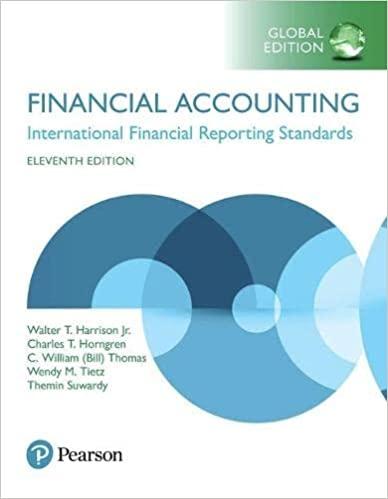P7-66A. (Learning Objectives 1, 2, 3: Computing depreciation by three methods; identifying the cash-flow advantage of accelerated
Question:
P7-66A. (Learning Objectives 1, 2, 3: Computing depreciation by three methods; identifying the cash-flow advantage of accelerated depreciation for tax purposes; subsequent costs) On January 9, 20X6, J. T. Orlando Co. paid $240,000 for a computer system. In addition to the basic purchase price, the company paid a setup fee of $2,000, $8,000 sales tax, and $30,000 for a special platform on which to place the computer. J. T. Orlando management estimates that the computer will remain in service for five years and have a residual value of $20,000. The computer will process 30,000 documents the first year, with annual processing decreasing by 2,500 documents during each of the next four years (that is, 27,500 documents in year 20X7;
25,000 documents in year 20X8; and so on). In trying to decide which depreciation method to use, the company president has requested a depreciation schedule for each of the three depreciation methods (straight-line, units-of-production, and double-declining-balance).
Requirements 1. For each of the generally accepted depreciation methods, prepare a depreciation schedule showing asset cost, depreciation expense, accumulated depreciation, and asset book value.
2. J. T. Orlando reports to shareholders and creditors in the financial statements using the depreciation method that maximizes reported income in the early years of asset use. For income tax purposes, the company uses the depreciation method that minimizes income tax payments in those early years. Consider the first year J. T. Orlando Co. uses the computer.
Identify the depreciation methods that meet Orlando’s objectives, assuming the income tax authorities permit the use of any of the methods.
Step by Step Answer:

Financial Accounting International Financial Reporting Standards Global Edition
ISBN: 9781292211145
11th Edition
Authors: Charles T. Horngren, C. William Thomas, Wendy M. Tietz, Themin Suwardy, Walter T. Harrison





